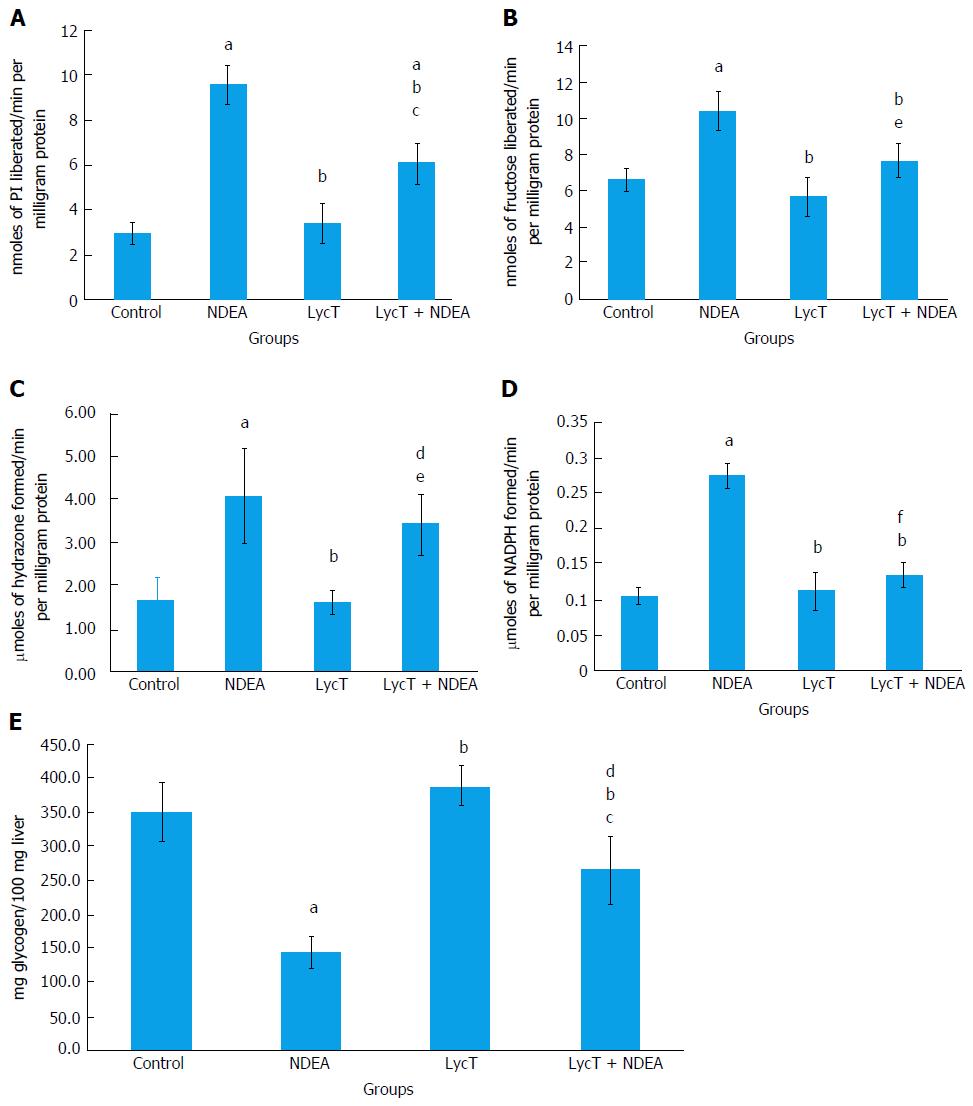Copyright
©The Author(s) 2016.
World J Hepatol. Oct 18, 2016; 8(29): 1222-1233
Published online Oct 18, 2016. doi: 10.4254/wjh.v8.i29.1222
Published online Oct 18, 2016. doi: 10.4254/wjh.v8.i29.1222
Figure 3 Effect of lycopene extracted from tomatoes and/or N-Nitrosodiethylamine.
A: Hexokinase activity (nmoles of pseudo-inclusions liberated/min per milligram protein); B: Phosphoglucoisomerase (nmoles of fructose liberated/min per milligram protein); C: Aldolase (μmoles of hydrazone formed/min per milligram protein); D: G6PD (μmoles of NADPH formed/min per milligram protein); E: Glycogen (mg glucose/100 mg liver). aP ≤ 0.05, compared to the control group; b,c,dP ≤ 0.001, compared to the control group, NDEA group and LycT group, respectively; e,fP ≤ 0.01, compared to the control group and LycT group, respectively. LycT: Lycopene extracted from tomatoes; NDEA: N-Nitrosodiethylamine.
- Citation: Gupta P, Bhatia N, Bansal MP, Koul A. Lycopene modulates cellular proliferation, glycolysis and hepatic ultrastructure during hepatocellular carcinoma. World J Hepatol 2016; 8(29): 1222-1233
- URL: https://www.wjgnet.com/1948-5182/full/v8/i29/1222.htm
- DOI: https://dx.doi.org/10.4254/wjh.v8.i29.1222









